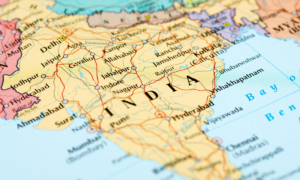INTRODUCTION of Judicial Activism & Case Laws
Judicial Activism & Case Laws- Judicial activism has always been a source of heated debate, particularly in the light of recent developments in this regard. In the last few years, with several controversial decisions, the Supreme Court judges, as well as the numerous High Courts, have again triggered a debate that has always been very strong. However, what the word “judicial activism” actually connotes is still a mystery. Under the Indian Constitution, the State is under the prime obligation to ensure justice, liberty, equality, and fraternity in the country.
In this sense, the Indian judiciary has been seen as the guardian and defender of the Indian Constitution. Considering its constitutional duty, the Indian judiciary has played an active role, whenever necessary, in protecting the individual’s fundamental rights against the State’s unjust, excessive, and unequal actions/ inactions. Therefore, the idea of judicial activism is the exact opposite of judicial restraint. Judicial activism and judicial restraint are the two terms used to describe the philosophy and motivation behind some judicial decisions.
HISTORICAL BACKGROUND of Judicial Activism & Case Laws
The concept of judicial activism found its roots in the English concepts of ‘equity’ and ‘natural rights’. The root of judicial activism in India is very difficult to find. For a very long time, the Indian judiciary had adopted an orthodox approach to the very concept of judicial activism.
It would be wrong, however, to say that there have been no incidents of judicial activism in India. Some scattered and stray incidents of judicial activism have taken place from time to time. But, they did not come to the fore as the very concept was unknown to India. However, the history of judicial activism can be traced back to 1893, when Justice Mehmood of the Allahabad High Court delivered a dissenting judgment that sowed the seed of judicial activism in India.
INDIAN SCENARIO
Judicial activism, as the modern terminology denotes, originated in India much later. This origin can be traced to the Theory of Social Want propounded by David McClelland. It was due to executive abuses and excesses that the judiciary had to intervene during legal proceedings. Let us look into the rationale behind such an intervention.
After independence from the British Raj, the executive has always looked upon the judiciary as a hostile branch of the State. This view gained more momentum and popularity when the bureaucracy degenerated into a system for personal and not public gains. Exploitation and Corruption have been part of the existing political structure.
The masses were oppressed beyond imagination by the unbridled actions of Money Power, Muscle Power, Media Power, and Ministerial Power. Judicial policymaking can be either activity in support of or in opposition to, legislative and executive policy choices. But the latter is generally referred to as judicial activism. The nature of true judicial activism is the making of judgments under the mood and time of the times. Judiciary policy activism promotes the cause of social change or articulates concepts such as freedom, equality, or justice. It’s got to be the arm of the social movement. An activist judge triggers the legal system and makes it a crucial part of the socio-economic cycle.
MEANING
Meaning of Judicial Activism & Case Laws is defined as – Since the judiciary has come to be recognized as an autonomous and separate government body under the Government of India Act, 1935, and subsequently, under the Constitution of India, it would be wise to look at the time following 1935 for the tracing of origin. A new rule is put in place not only to fix and resolve the present problem, but also to extend generally to all potential problems which are not presently before the Court, but are likely to occur in the future.
According to Black’s Law Dictionary judicial activism is described as: “a theory of judicial decision-making by which judges allow their personal opinions on public policy, among other factors, to direct their decisions, usually with the implication that adherents to this theory appear to find constitutional violations and are willing to disregard precedents.”
Judicial activism is when the Courts, after hearing both sides, move from their conventional position of decision-making to the position of the legislature and make new legislation, new rules, and new policies. In the first decade of independence, activism on the part of the judiciary was almost nil, with political stalwarts running the executive, and the parliament working with great enthusiasm, the judiciary working with the executive. From the 1950s to the 1970s, the Supreme Court held a full judicial and institutional view of the constitution.

Judicial Activism & Case Laws Of Judicial Activism
Judicial Activism & Case Laws related to Judicial Activism
The first major case of judicial intervention by social action litigation was the case of the Bihar court which was Hussainara Khatoon Vs the State of Bihar. In 1980, in the form of a written petition under Article 21, some law professors exposed the barbarous conditions of detention at the Agra Protective Home, followed by a lawsuit against Delhi Women’s Home filed by a Delhi Law School student and a social worker.
In 1967 In Golak Nath v. the State of Punjab, the Supreme Court held that the constitutional rights of Part III of the Indian Constitution could not be modified, even though there was no such limitation in Article 368, which only included a resolution of a two-thirds majority in both Houses of Parliament.
Subsequently, In the well-known case of Kesavananda Bharati, two years before the declaration of emergency, the Apex Court ruled that the government had no right to interfere with the constitution and to change its fundamental characteristics. In Kesavananda Bharati v. The State of Kerala, 13 Judge Bench of the Supreme Court overruled the Golakh Nath decision but held that the fundamental framework of the Constitution could not be changed.
As to what is meant by ‘simple structure’ it is still not clear, although some later verdicts have sought to clarify it. The point to be remembered, however, is that there is no reference in Article 368 that the basic structure could not be modified. Accordingly, the decision has amended Article 368. A significant number of decisions of the Supreme Court of India, in which it has played an activist position, refer to Article 21 of the Indian Constitution, and we are therefore dealing with it separately.
Judicial intervention can be seen in three ways: Firstly, by overturning any statute as unconstitutional, Secondly, by overturning judicial precedents, and, Thirdly, by reading the Constitution. In simple terms, judicial activism can be seen as the political role played by the judiciary, much like the other two executive and legislative ones. Judicial activism is justified on different grounds, such as the fall of the government, which requires the judiciary to provide assistance and policies for public welfare. The definition of activism differs from community to community, these categories are law teachers, businessmen, judges, police officers, administrative officials, students, etc.
Any act which is perceived to be activism by one party, but at the same time can become judicial inactivity for other groups. The idea of judicial populism can be seen as associated with judicial absolutism, judicial chaos, judicial hegemony, and judicial imperialism. Judicial restraint is also known as judicial independence. It is synonymous with judicial liberalism. Judicial intervention and judicial restraint are words used to stress the ‘right position of the Courts.’
CONCLUSION of Judicial Activism & Case Laws
Recently, the nation has seen instances of beneficial judicial activism to a large degree. Shibu Soren, a high-profile politician, has been convicted of a 1994 murder. Tinsel’s world-famous Sanjay Dutt of Gandhigiri fame was convicted under the Arms Act of 1993. Navjyot Sidhu, an ex-cracker with a gift from the gab, was convicted of a road rage killing committed 18 years ago. Whatever criticism of judicial activism, it can not be disputed that judicial activism has done a great deal to improve the conditions of the masses in the country.



























